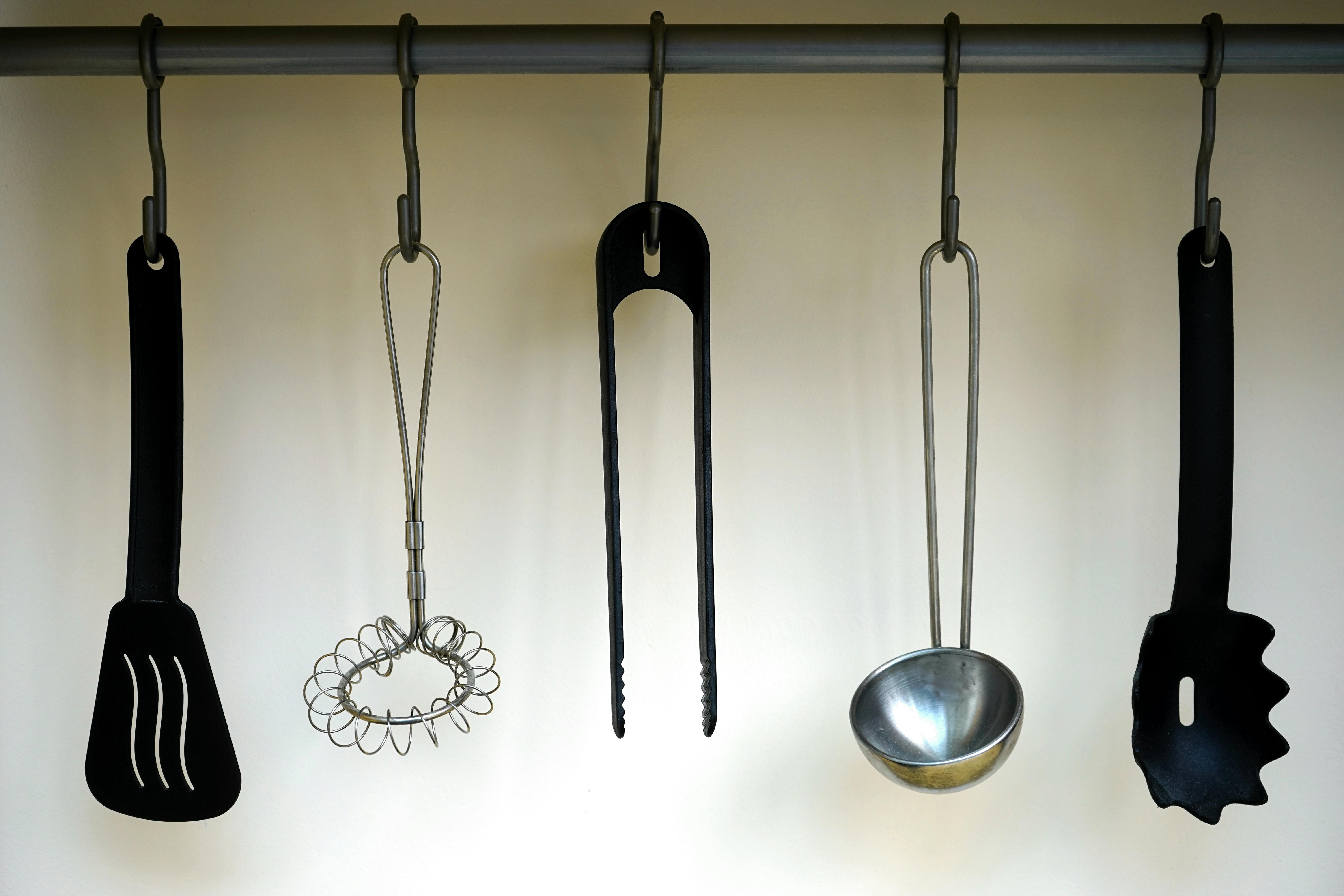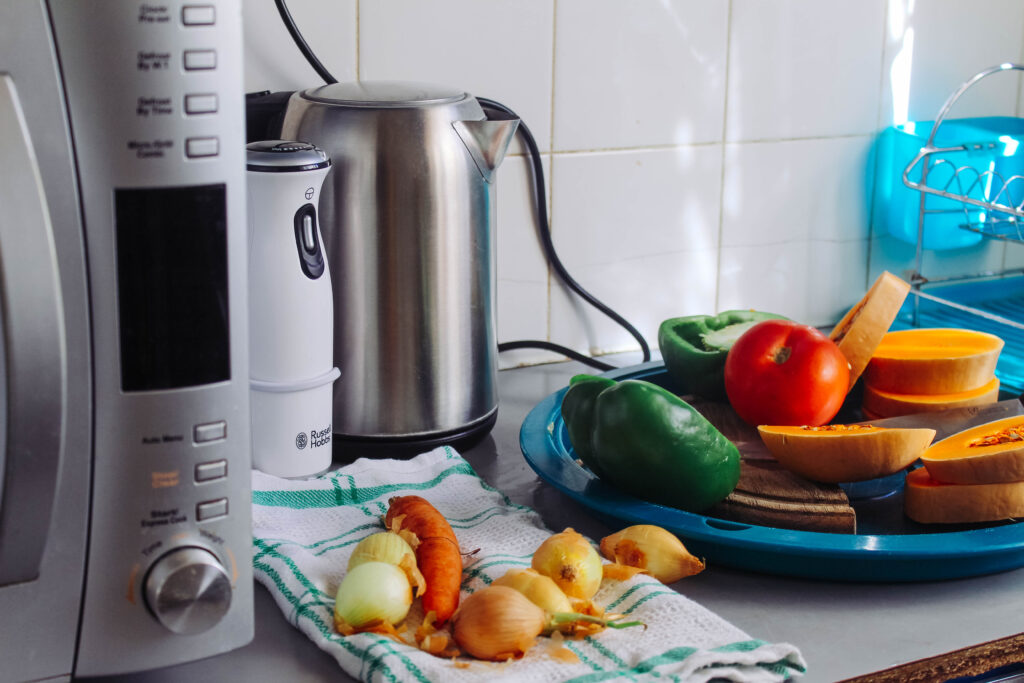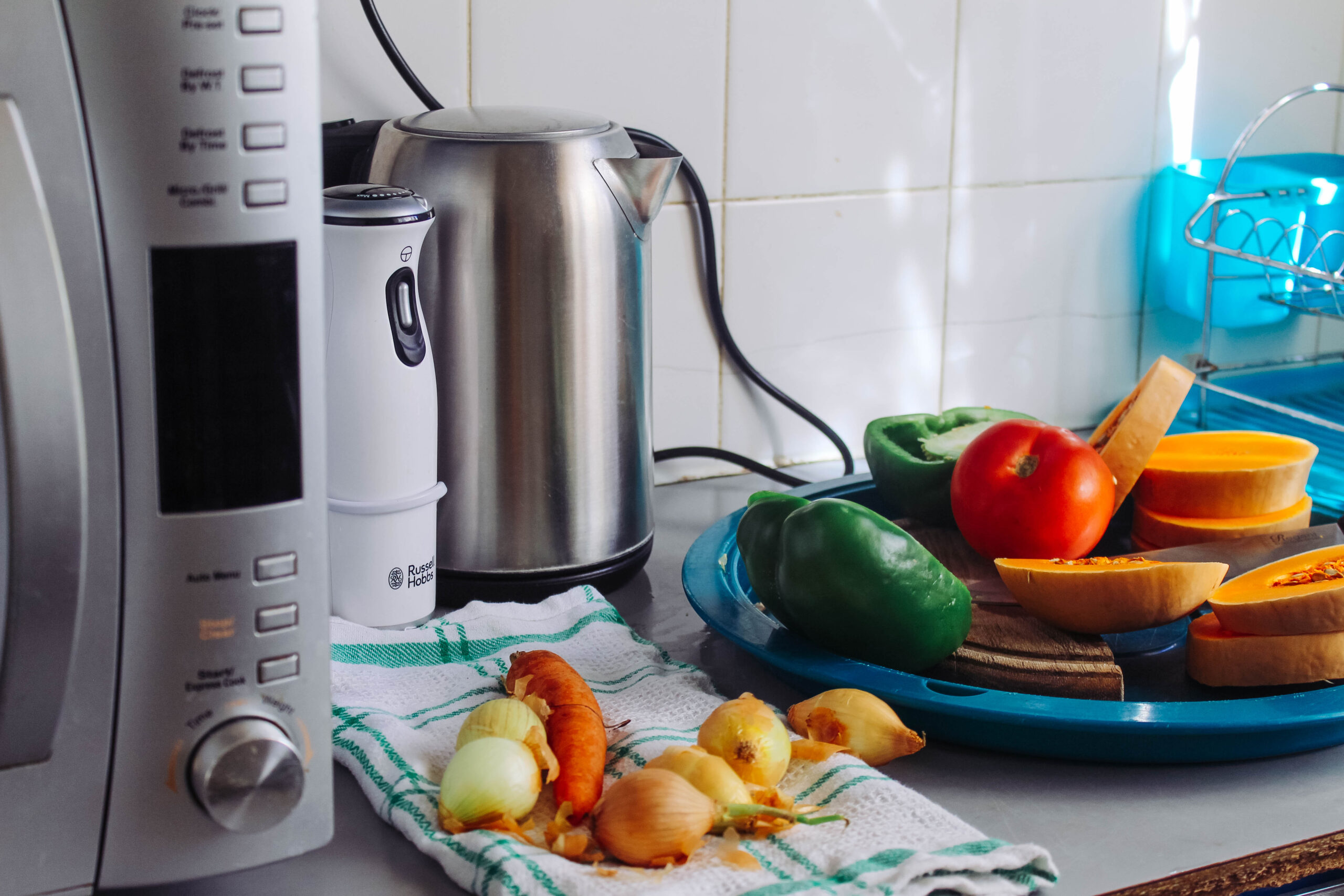Looking to up your culinary game? Look no further than “A Chef’s Guide To Quality Cutting Boards.” Whether you’re a professional chef or an aspiring home cook, having the right cutting board can make all the difference in the world. From durable materials to proper maintenance, this guide will provide you with the essential knowledge needed to choose a cutting board that suits your needs and elevates your cooking experience. Get ready to chop, slice, and dice like a pro!

Types of Cutting Boards
When it comes to choosing the right cutting board for your kitchen, you’ll find a variety of options available. Each type of cutting board has its own unique features and benefits. Here are the most common types:
Wooden Cutting Boards
Wooden cutting boards have been a staple in kitchens for centuries. They are popular for their natural beauty and durability. Wooden cutting boards are often made from hardwoods like maple, walnut, or cherry. These materials provide a sturdy surface that can withstand the repeated chopping and cutting actions of knives.
One of the main advantages of wooden cutting boards is their knife-friendly surface. The slight softness of the wood helps to maintain the sharpness of your knives by not dulling the blades. Wooden cutting boards also have natural antibacterial properties, which can help reduce the risk of cross-contamination during food preparation.
Plastic Cutting Boards
Plastic cutting boards are widely used in both home and professional kitchens. They are affordable, lightweight, and easy to clean. Plastic cutting boards are available in a variety of colors, which allows for color-coded organization when preparing different types of foods.
One of the major benefits of plastic cutting boards is their affordability and availability. You can easily find them at kitchen supply stores or online retailers at a reasonable price. Plastic cutting boards are also dishwasher-safe, making clean-up a breeze. They are a great option for those who prefer a low-maintenance cutting board.
Bamboo Cutting Boards
Bamboo cutting boards have gained popularity in recent years due to their eco-friendly nature. Bamboo is a highly sustainable material that grows and replenishes quickly, making it an excellent choice for those who are conscious of the environment. Bamboo cutting boards are also known for their hardness and sturdiness, providing a durable surface for cutting and chopping.
Another advantage of bamboo cutting boards is their natural resistance to knife marks. The tight grain structure of bamboo prevents deep cuts and grooves from forming, which can make cleaning and maintenance easier. Bamboo cutting boards also require minimal maintenance and can simply be wiped clean with warm soapy water and dried thoroughly.
Composite Cutting Boards
Composite cutting boards are made from a combination of materials, typically a mixture of wood fibers and plastic. These cutting boards offer the benefits of both wooden and plastic cutting boards. They are durable, stain-resistant, and more knife-friendly than traditional plastic cutting boards.
One of the key advantages of composite cutting boards is their durability. They are less prone to cracking or splitting, making them a long-lasting option for your kitchen. Composite cutting boards also offer a temperature and moisture resistance, preventing warping or bending over time. They are easy to clean and maintain, requiring only a simple wash with soap and water.
Choosing the Right Material
Choosing the right material for your cutting board is essential for both functionality and longevity. Here are some factors to consider when selecting the material:
Wooden Cutting Boards
Wooden cutting boards are a popular choice due to their durability, knife-friendly surface, and natural antibacterial properties. However, they do require more maintenance than other types of cutting boards. Wooden cutting boards should never be submerged in water, as this can cause warping or splitting. Instead, they should be cleaned with warm soapy water and dried thoroughly after each use. It is also recommended to periodically refinish and oil wooden cutting boards to keep them in optimal condition.
Plastic Cutting Boards
Plastic cutting boards are known for their affordability, ease of cleaning, and dishwasher-safe properties. They are a great choice for those looking for a low-maintenance cutting board option. Plastic cutting boards can be cleaned by simply handwashing with warm soapy water or placing them in the dishwasher. However, it is important to note that plastic cutting boards can become easily scratched and worn over time, providing a potential breeding ground for bacteria. It is recommended to replace plastic cutting boards regularly to ensure food safety.
Bamboo Cutting Boards
Bamboo cutting boards offer the benefits of being eco-friendly, durable, and low-maintenance. They require minimal care and can be cleaned by wiping them with warm soapy water and drying them thoroughly. However, it is important to note that bamboo cutting boards should not be soaked or placed in the dishwasher, as this can cause damage to the board. To maintain the longevity of bamboo cutting boards, it is recommended to periodically apply a food-safe mineral oil to prevent drying and cracking.
Composite Cutting Boards
Composite cutting boards combine the best features of wooden and plastic cutting boards. They are durable, stain-resistant, and offer a knife-friendly surface. Cleaning composite cutting boards is as simple as handwashing them with warm soapy water or placing them in the dishwasher. However, it is important to note that composite cutting boards may be more prone to scratching than wooden cutting boards. It is recommended to use non-abrasive cleaners and avoid using sharp knives with long blades to minimize scratching.

Size and Thickness
In addition to considering the material of the cutting board, it is also important to choose the right size and thickness for your needs. Here are some factors to consider:
Consider the Available Space
Before purchasing a cutting board, consider the available space in your kitchen. If you have limited counter space, a smaller cutting board may be more suitable. On the other hand, if you usually prepare large meals or work with large ingredients, a larger cutting board may be necessary to accommodate your needs.
Handling and Storage
The size and weight of the cutting board can also affect how easy it is to handle and store. If you often need to move your cutting board around the kitchen or store it in a tight space, a lighter and more compact option might be preferable. Consider whether you have enough space in your kitchen cabinets or drawers to comfortably store the cutting board when not in use.
Ideal Thickness for Cutting Boards
The thickness of a cutting board can impact its durability and stability. Thicker cutting boards are generally more durable and less likely to warp or bend over time. They provide a more stable surface for cutting and chopping. However, thicker cutting boards can also be heavier and bulkier to handle. It is important to find a balance between thickness and practicality based on your personal preferences and needs.
Cutting Board Maintenance
Proper maintenance is essential to prolong the life of your cutting board and ensure food safety. Here are some tips for cleaning and maintaining your cutting board:
Cleaning and Sanitizing
After each use, wash your cutting board with warm soapy water. Use a sponge or dishcloth to scrub away any food particles and stains. Rinse the cutting board thoroughly and dry it with a clean towel or let it air dry. To sanitize the cutting board, you can use a diluted solution of bleach and water. Mix one tablespoon of bleach with one gallon of water and apply it to the surface of the cutting board. Let it sit for a few minutes, then rinse and dry the board thoroughly.
Avoiding Cross-Contamination
To prevent cross-contamination, it is important to use separate cutting boards for different types of food. For example, use one cutting board for raw meats, another for fruits and vegetables, and a different one for bread and other non-perishable items. This helps reduce the risk of transferring bacteria from one type of food to another. Color-coded cutting boards can be a helpful tool to ensure you use the right board for each food group.
Refinishing and Oiling
Wooden cutting boards may require periodic refinishing and oiling to maintain their beauty and durability. Refinishing involves sanding down the surface of the board to remove any scratches or stains. After sanding, apply a food-safe mineral oil or a board conditioner to moisturize the wood and protect it from drying and cracking. This process helps to prolong the lifespan of the cutting board and maintain its natural beauty.

Benefits of Wooden Cutting Boards
Wooden cutting boards offer several advantages that make them a popular choice among chefs and home cooks. Here are some of the benefits:
Knife-Friendly Surface
Wooden cutting boards are gentle on knife blades, helping to maintain their sharpness for longer. The slight softness of the wood prevents excessive wear and tear on the blades, allowing them to remain sharp and efficient.
Natural Antibacterial Properties
Wood has natural antibacterial properties that can help reduce the risk of cross-contamination during food preparation. The porous nature of wood absorbs moisture, depriving bacteria of the environment they need to thrive. Regular cleaning and proper maintenance can further enhance the antibacterial properties of wooden cutting boards.
Durability and Longevity
Well-made wooden cutting boards can last for many years if properly cared for. The durability of wooden cutting boards is a result of their strong and resilient construction. With regular maintenance, including refinishing and oiling, wooden cutting boards can withstand the test of time in the kitchen.
Enhances Food Presentation
Wooden cutting boards add a touch of natural beauty and warmth to your kitchen. They can enhance the presentation of your prepared dishes, making them not just functional but also visually appealing. Whether you’re serving cheese, charcuterie, or a freshly sliced loaf of bread, a wooden cutting board can elevate the overall presentation and create a more inviting dining experience.
Benefits of Plastic Cutting Boards
Plastic cutting boards have their own set of advantages that make them a popular choice for many home cooks. Here are
Affordability and Availability
Plastic cutting boards are generally more affordable compared to other materials. They are widely available at kitchen supply stores, supermarkets, and online retailers. Their affordability makes them a convenient option for those on a budget or looking for a quick and easy solution.
Ease of Cleaning
Plastic cutting boards are known for their ease of cleaning. They can be washed by hand with warm soapy water or placed in the dishwasher for a thorough clean-up. The non-porous surface of plastic prevents the absorption of liquids and odors, making clean-up a breeze.
Dishwasher-Safe
One of the major advantages of plastic cutting boards is their dishwasher-safe nature. This is a huge time-saver for those who prefer the convenience of using a dishwasher for cleaning. Plastic cutting boards can be placed on the top rack of the dishwasher, allowing for a hassle-free cleaning process.
Color-Coded Options for Different Food Groups
Plastic cutting boards come in a variety of colors, making it easy to assign different boards for different food groups. This color-coding system helps prevent cross-contamination by ensuring that each board is used for specific types of food. For example, you can use a red board for raw meat, a green board for fruits and vegetables, and a blue board for fish.
Benefits of Bamboo Cutting Boards
Bamboo cutting boards have gained popularity in recent years due to their eco-friendly nature and unique properties. Here are the benefits of bamboo cutting boards:
Eco-Friendly and Sustainable
Bamboo is a highly sustainable material that grows and replenishes much faster than hardwood trees. It is a renewable resource that requires minimal water, pesticides, and fertilizers to grow. By choosing bamboo cutting boards, you are making an environmentally-friendly choice and helping to preserve natural resources.
Hardness and Sturdiness
Bamboo cutting boards are known for their hardness and sturdiness. They provide a strong and durable surface for cutting and chopping, making them highly resistant to wear and tear. The solid construction of bamboo cutting boards ensures that they can handle heavy-duty use in the kitchen.
Naturally Resistant to Knife Marks
The tight grain structure of bamboo makes it naturally resistant to knife marks and scratches. This means that bamboo cutting boards are less likely to develop deep grooves, which can harbor bacteria and make cleaning more difficult. The smooth surface of bamboo cutting boards also allows for easy removal of food particles and stains.
Low Maintenance
Bamboo cutting boards require minimal maintenance to keep them in good condition. Regular cleaning with warm soapy water and thorough drying is usually sufficient to maintain their cleanliness. It is recommended to avoid soaking or submerging bamboo cutting boards in water, as this can cause warping or splitting. Applying a food-safe mineral oil periodically can help restore moisture and prevent drying and cracking.
Benefits of Composite Cutting Boards
Composite cutting boards offer a combination of features from both wooden and plastic cutting boards. Here are the benefits of using composite cutting boards:
Durable and Stain-Resistant
Composite cutting boards are made from a mixture of wood fibers and plastic, resulting in a durable and stain-resistant surface. They are less prone to cracking or splitting compared to traditional wooden cutting boards. The composite material also prevents liquid absorption, making them resistant to stains and odors.
Knife-Friendly Surface
Like wooden cutting boards, composite cutting boards offer a knife-friendly surface. The slight softness of the wood fibers helps to maintain the sharpness of knives and reduce wear and tear on the blades. This ensures that your knives stay sharper for longer and provides a smooth cutting experience.
Temperature and Moisture Resistance
Composite cutting boards are resistant to temperature and moisture, making them suitable for a variety of kitchen tasks. They can withstand hot pots and pans without warping or melting. Composite cutting boards are also less likely to absorb moisture, which prevents the growth of bacteria and reduces the risk of unwanted odors.
Easy to Clean
Cleaning composite cutting boards is a simple task. They can be washed by hand with warm soapy water or placed in the dishwasher for a thorough cleaning. The non-porous surface of composite cutting boards prevents food particles and liquids from seeping into the material, making clean-up quick and easy.
Additional Features to Consider
When choosing a cutting board, there are additional features that you may want to consider based on your personal preferences and needs. Here are some features to look out for:
Grip and Stability
Some cutting boards come with built-in grips or non-slip edges to enhance stability during use. These features help prevent the cutting board from slipping and sliding on your countertop, providing a safer cutting experience.
Juice Grooves
Juice grooves or channels along the edges of the cutting board can help contain liquids and prevent them from spilling onto your countertop. This feature is especially useful when cutting juicy fruits, meats, or vegetables.
Non-Slip Base
A cutting board with a non-slip base can provide added stability and prevent it from moving around during use. This feature is particularly important when working with sharp knives, as it ensures that the cutting board stays securely in place.
Built-In Compartments
Some cutting boards come with built-in compartments or trays for collecting and storing chopped ingredients. This can be convenient for those who like to keep their workspace organized and reduce the need for additional bowls or containers.
Reversible Design
Many cutting boards feature a reversible design with different surface textures on each side. This allows you to use one side for cutting and chopping, while reserving the other side for serving or presentation purposes. A reversible cutting board can be a versatile addition to your kitchen.
Budget-Friendly Options
If you’re on a budget or looking for cost-effective options, there are a few ways to find affordable cutting boards. Here are some budget-friendly options to consider:
Affordable Brands
Look for reputable brands that offer quality cutting boards at affordable prices. Some well-known kitchenware companies offer budget-friendly options without compromising on functionality or durability. Research customer reviews and compare prices to find the best affordable brands.
Discounts and Sales
Keep an eye out for discounts and sales at kitchen supply stores, homeware stores, and online retailers. Many stores offer seasonal or clearance sales where you can find cutting boards at reduced prices. Signing up for newsletters or following social media accounts of kitchenware retailers can help you stay informed about upcoming sales.
Second-Hand or Thrift Stores
Consider checking out second-hand or thrift stores in your area. These stores often have a variety of kitchenware items, including cutting boards, at significantly lower prices. While the selection may not be as extensive as in new retail stores, you may find a suitable cutting board in good condition at a fraction of the retail price.
DIY Cutting Boards
For those who enjoy DIY projects, making your own cutting board can be a cost-effective option. There are plenty of tutorials and guides available online that provide step-by-step instructions for making cutting boards from various materials, including wood and bamboo. Not only will you save money, but you’ll also have a unique and personalized cutting board.
In conclusion, choosing the right cutting board for your kitchen is crucial for efficient and safe food preparation. Consider the material, size, and additional features that best suit your needs. Whether you opt for a traditional wooden cutting board, a plastic cutting board, a bamboo cutting board, or a composite cutting board, each type offers its own advantages and benefits. By investing in a quality cutting board and practicing proper maintenance, you can enjoy many years of reliable service in your kitchen. Happy chopping!

